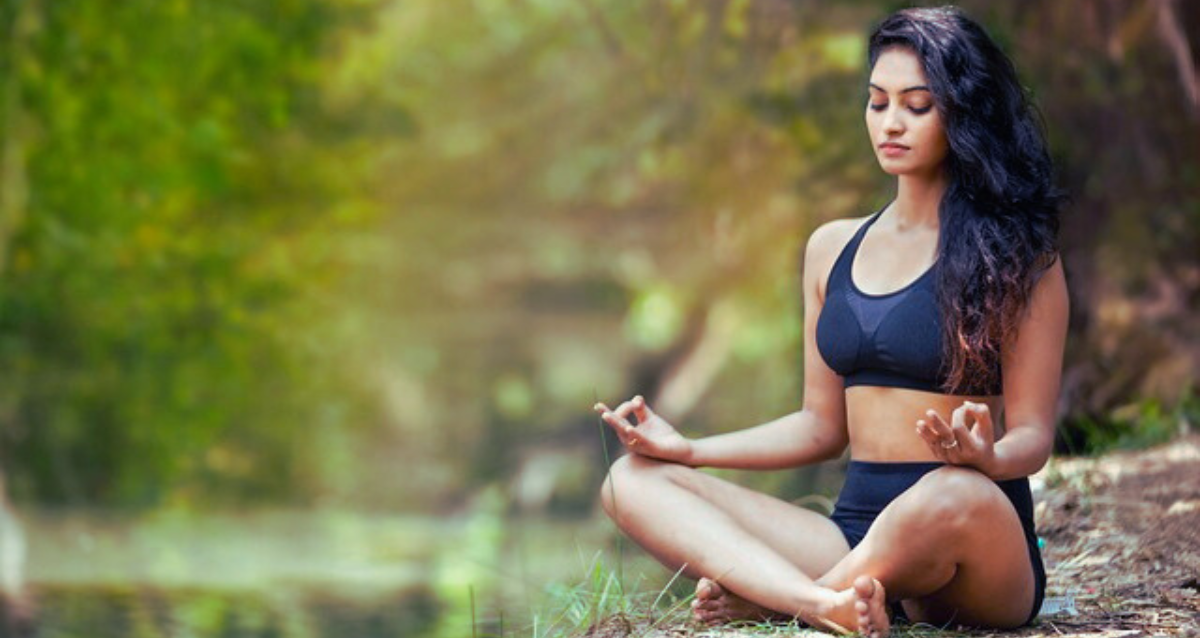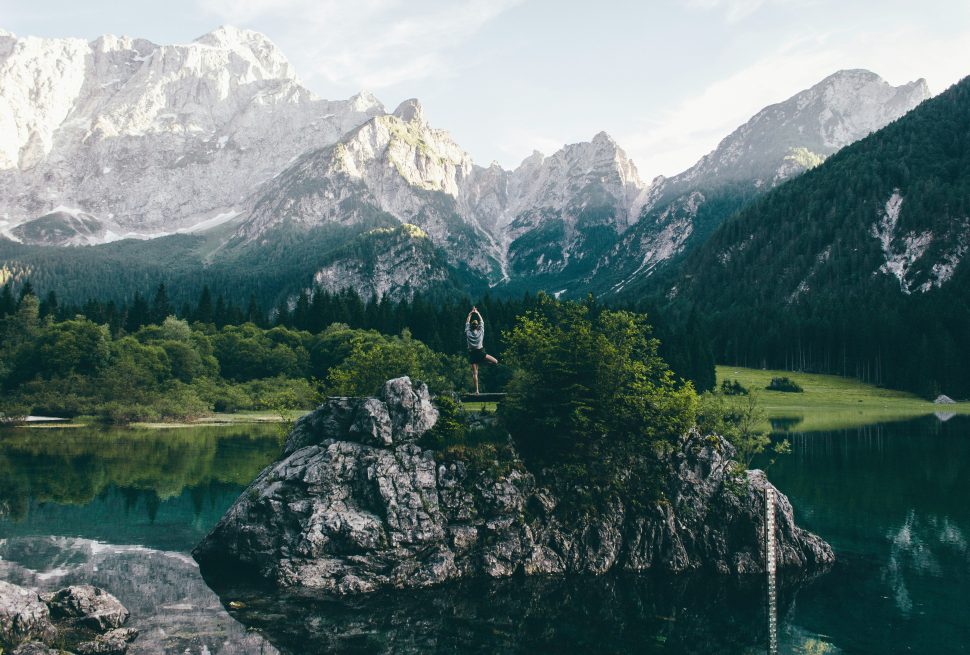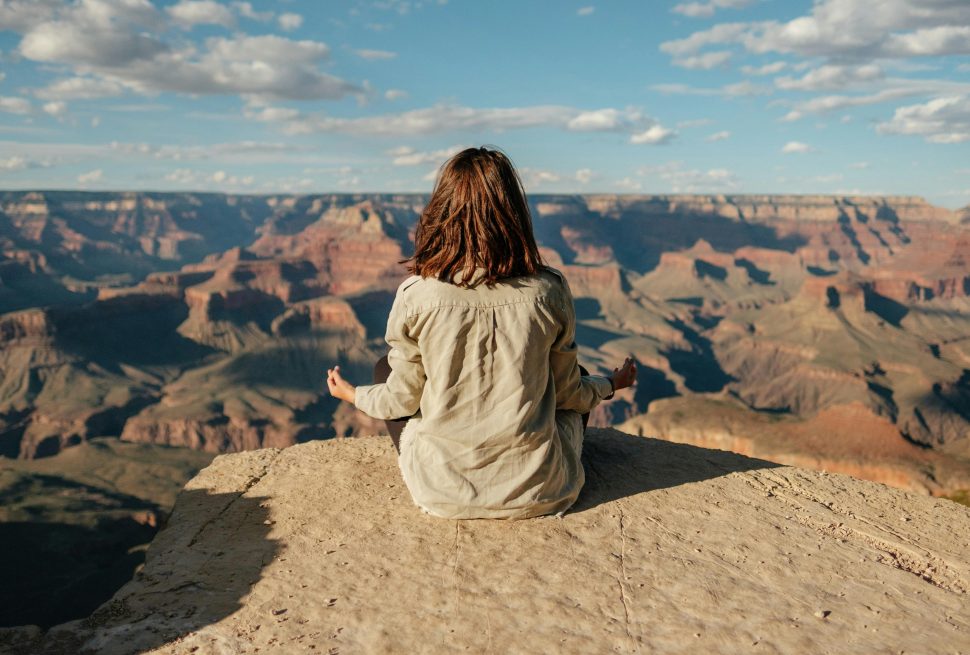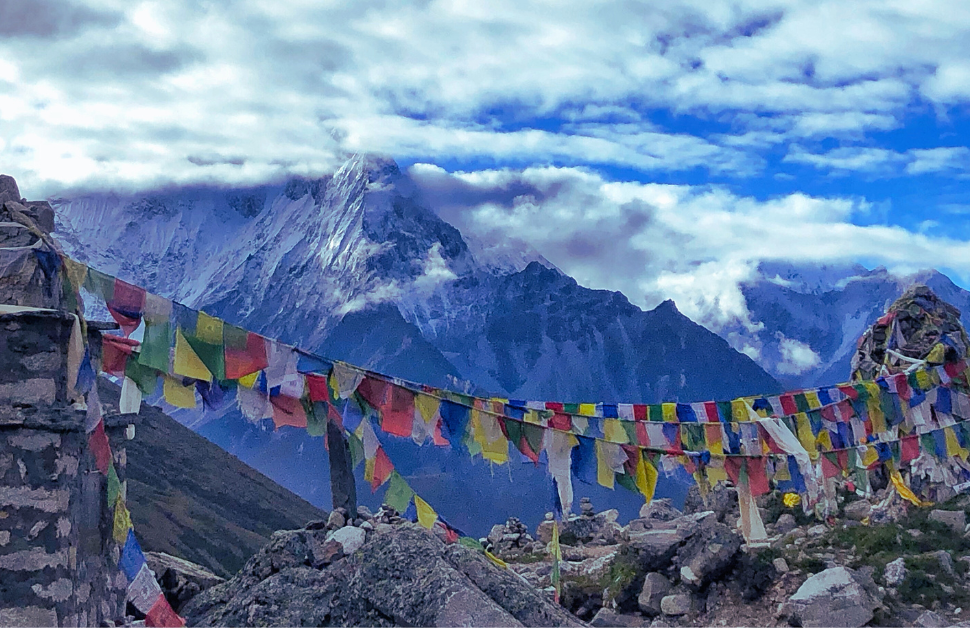Asanas to Altitude : The combination of asanas, body preparation, yoga, and trekking in Nepal creates a unique and transformative experience for adventure seekers and spiritual enthusiasts alike. Asanas yoga trekking in Nepal offers a perfect blend of physical challenge and inner exploration. As you embark on this journey, it’s crucial to understand how to prepare your body and mind for the challenges that await you in the breathtaking Himalayan landscape. From mastering essential asanas to adapting to high altitudes, every aspect of your preparation contributes to the success of your yoga trekking adventure.
Understanding Yoga Trekking in Nepal
Yoga trekking in Nepal is a harmonious blend of physical exertion and spiritual practice. It involves hiking through diverse terrains while incorporating yoga sessions into your daily routine. This unique combination allows trekkers to connect with nature, challenge their bodies, and deepen their yoga practice in one of the most spiritually significant regions of the world.
The Origins of Yoga Trekking
The concept of yoga trekking originated from the ancient practices of yogis who would retreat to the mountains for meditation and self-discovery. In recent years, it has gained popularity as a way to combine adventure travel with mindfulness and physical wellness.
Popular Yoga Trekking Routes in Nepal
Nepal offers numerous trekking routes suitable for yoga enthusiasts. Some of the most popular include:
- Annapurna Circuit
- Everest Base Camp
- Langtang Valley
- Upper Mustang
Benefits of Combining Yoga and Trekking
The synergy between yoga and trekking provides numerous benefits:
- Improved flexibility and strength
- Enhanced mental focus and clarity
- Better acclimatization to altitude
- Deeper connection with nature and oneself
What to Expect on a Yoga Trekking Adventure
During a yoga trekking expedition, you can expect daily hikes interspersed with yoga sessions. These sessions may take place in the morning before trekking, during breaks, or in the evening at your accommodation. The practice helps in recovery, maintaining flexibility, and centering the mind amidst the physical challenges of trekking.
Essential Asanas for Body Preparation in Yoga Trekking
Preparing your body through specific asanas is crucial for a successful yoga trekking experience in Nepal. These poses focus on building strength, improving flexibility, and enhancing balance – all essential components for navigating challenging mountain terrain.
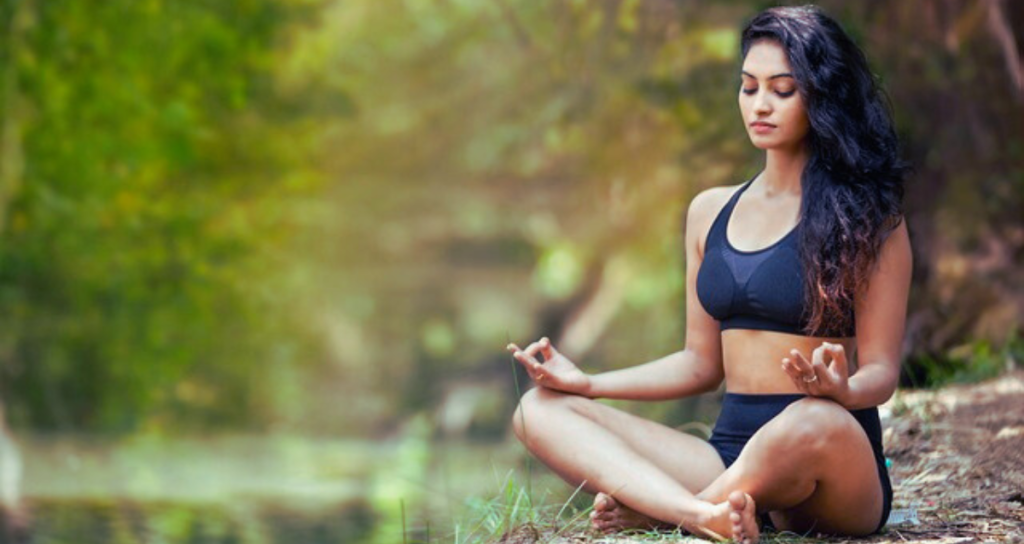
Strengthening Asanas for Trekking
- Utkatasana (Chair Pose): Builds leg strength and endurance
- Virabhadrasana I, II, III (Warrior Poses): Strengthens legs and core
- Plank Pose: Enhances overall body strength and stability
Flexibility-Enhancing Asanas
- Adho Mukha Svanasana (Downward-Facing Dog): Stretches hamstrings and calves
- Uttanasana (Standing Forward Bend): Increases hamstring flexibility
- Anjaneyasana (Low Lunge): Opens hip flexors and improves leg flexibility
Balance-Improving Asanas
- Vrksasana (Tree Pose): Enhances balance and focus
- Natarajasana (Dancer’s Pose): Improves balance and core strength
- Ardha Chandrasana (Half Moon Pose): Strengthens legs and improves stability
Breathing Exercises for Altitude Preparation
- Ujjayi Pranayama (Victorious Breath): Improves lung capacity
- Nadi Shodhana (Alternate Nostril Breathing): Balances the nervous system
- Kapalabhati (Skull Shining Breath): Energizes the body and clears the mind
Incorporating Asanas into Your Training Routine
To prepare for yoga trekking in Nepal, incorporate these asanas into your daily practice. Start with 15-20 minutes per day and gradually increase the duration and intensity as your trip approaches. Remember to focus on proper alignment and breathing techniques to maximize the benefits of each pose.
Physical Conditioning for Yoga Trekking in Nepal
While asanas play a crucial role in preparing your body for yoga trekking in Nepal, additional physical conditioning is essential to ensure you’re ready for the challenges of high-altitude hiking. A well-rounded training program will help you build endurance, strength, and cardiovascular fitness.
Cardiovascular Training for Trekking
- Hiking: Start with local trails and gradually increase distance and elevation
- Stair climbing: Excellent for simulating uphill trekking
- Cycling: Low-impact cardio that builds leg strength
- Swimming: Full-body workout that improves lung capacity
Strength Training Exercises
- Squats and lunges: Target leg muscles used in trekking
- Step-ups: Mimic the motion of climbing stairs or rocks
- Deadlifts: Strengthen lower back and hamstrings
- Core exercises: Improve balance and stability on uneven terrain
Endurance Building Techniques
- Long-distance walking: Gradually increase duration and pack weight
- Interval training: Alternate between high and low-intensity exercises
- Backpack training: Wear a loaded backpack during workouts
- Multi-day hikes: Simulate consecutive days of trekking
Flexibility and Recovery Practices
- Regular stretching: Maintain flexibility and prevent injuries
- Foam rolling: Release muscle tension and improve recovery
- Yoga flow sequences: Combine strength, flexibility, and balance training
- Meditation: Enhance mental resilience and focus
Creating a Training Schedule for Asanas to Altitude
Develop a progressive training plan that incorporates asanas, body preparation, yoga, and trekking-specific exercises. Begin at least 3-4 months before your Nepal adventure to allow adequate time for conditioning.
Altitude Acclimatization and Yoga Practices
One of the biggest challenges in yoga trekking in Nepal is adapting to high altitudes. Proper acclimatization is crucial for a safe and enjoyable experience. Combining altitude preparation with yoga techniques can significantly enhance your body’s ability to adjust to lower oxygen levels.
Understanding Altitude Sickness
Altitude sickness, or Acute Mountain Sickness (AMS), can affect trekkers ascending to high elevations. Symptoms include:
- Headache
- Nausea
- Dizziness
- Fatigue
- Shortness of breath
Yoga Techniques for Altitude Adaptation
- Pranayama practices: Enhance oxygen utilization
- Meditation: Reduce anxiety and promote relaxation
- Gentle asanas: Improve circulation without overexertion
- Restorative yoga: Support rest and recovery at high altitudes
Acclimatization Strategies
- Gradual ascent: Follow the “climb high, sleep low” principle
- Proper hydration: Drink plenty of water to combat altitude effects
- Balanced nutrition: Consume easily digestible, nutrient-rich foods
- Adequate rest: Allow your body time to adjust between elevation gains
Yoga Sequences for High-Altitude Trekking
Develop a yoga routine that combines gentle asanas, pranayama, and meditation to support your body during high-altitude trekking. Focus on:
- Gentle sun salutations to warm up the body
- Standing poses for strength and balance
- Seated poses for flexibility and grounding
- Restorative poses to promote relaxation and recovery
Listen to Your Body
During yoga trekking in Nepal, it’s crucial to pay attention to your body’s signals. If you experience severe symptoms of altitude sickness, descend immediately and seek medical attention.
Essential Gear and Packing Tips for Yoga Trekking
Proper gear selection is vital for a comfortable and safe yoga trekking experience in Nepal. Balancing the need for trekking equipment with yoga essentials requires careful consideration and packing strategy.
Trekking Gear Essentials
- Sturdy hiking boots: Ensure proper fit and break them in before the trip
- Trekking poles: Provide stability and reduce strain on knees
- Layered clothing: Adapt to changing weather conditions
- Waterproof jacket and pants: Protection from unexpected rain or snow
Yoga Equipment for the Trail
- Lightweight travel yoga mat: Choose a compact, durable option
- Yoga blocks: Inflatable or foam blocks for support in asanas
- Yoga strap: Assists in stretches and improves flexibility
- Meditation cushion: Optional for seated practices
Backpack Selection and Packing
- Choose a comfortable, well-fitting backpack with proper support
- Pack strategically, placing heavier items close to your back
- Use packing cubes or dry bags to organize gear
- Keep essential items easily accessible
Clothing Considerations
- Moisture-wicking base layers: Regulate body temperature
- Insulating mid-layers: Provide warmth in cooler conditions
- Breathable, quick-drying yoga wear: Suitable for practice and trekking
- Sun protection: Hat, sunglasses, and UPF-rated clothing
Additional Gear for Yoga Trekking
- Headlamp: For early morning or evening yoga sessions
- Water purification system: Ensure safe drinking water on the trail
- First-aid kit: Include altitude sickness medication
- Camera or journal: Capture your yoga trekking memories
By carefully selecting and packing your gear, you’ll be well-prepared for the unique challenges and joys of yoga trekking in Nepal. Remember to balance the need for comprehensive equipment with the importance of keeping your pack weight manageable.
Spiritual Practices: Mantra chanting, Ayurvedic Diet
To further enrich your yoga trekking journey in Nepal, consider incorporating additional spiritual practices and holistic wellness approaches. These elements can deepen your connection to the local culture, enhance your yoga practice, and support your overall well-being during the trek.
The Power of Mantra Chanting
- Learn basic Sanskrit mantras: Incorporate Om, Shanti, or Namaste into your practice. Our team will guide you during the journey but you can prepare it beforehand too.
- Practice while trekking: Use mantra chanting as a form of moving meditation, mantras are believed to be a sound of the universe, incorporating them during your journey can be helpful to move forward.
- Join local chanting sessions: Participate in group chants at monasteries or temples, locals can also be happy by seeing a new person joining their prayers.
Embracing Raga Music for Relaxation and Focus
- Introduce raga music to your routine: Listen during yoga sessions or while resting
- Understand raga timing: Learn about the traditional times for specific ragas
- Use music for meditation: Incorporate ragas into your mindfulness practice
- Attend local music performances: Experience live raga music in Nepal
Exploring Guided Meditation Techniques
- Try different styles: Experiment with Vipassana, Loving-kindness, or Zen meditation
- Use guided apps: Download meditation apps for on-the-go practice
- Participate in group sessions: Join guided meditations at local monasteries
- Practice mindful trekking: Turn your hike into a moving meditation
Adopting an Ayurvedic Diet for Optimal Trekking Performance
- Understand your dosha: Learn about Ayurvedic body types and their dietary needs, our guide can help you with that, our team of manasukh can help you with it too.
- Choose balanced foods: Select meals that support your constitution and the demands of trekking, foods enriched in carbs, nutrition and protein can be best for your journey.
- Incorporate Ayurvedic herbs: Use adaptogens like ashwagandha or holy basil for stress management.
- Practice mindful eating: Apply Ayurvedic principles of food combining and eating awareness, be considerate of your allergies if you have any.
Integrating Holistic Practices into Your Trek
- Create a daily ritual: Combine mantra, meditation, and yoga for a comprehensive practice for your own well being and health improvement.
- Balance activity with rest: Use restorative practices to complement the physical demands of trekking along the journey.
- Journal your experiences: Record insights gained from these spiritual and wellness practices, share them, create contents from them, implement the things you incorporate during the journey to your regular life.
By incorporating these elements of mantra chanting, raga music, guided meditation, and Ayurvedic principles into your yoga trekking experience, you’ll create a more holistic and culturally immersive journey. These practices not only enhance your physical preparation but also deepen your spiritual connection to the rich traditions of Nepal.
Nutrition and Hydration for Yoga Trekking in Nepal
Proper nutrition and hydration are crucial elements in preparing your body for yoga trekking in Nepal. The combination of high-altitude trekking and daily yoga practice demands a well-thought-out approach to fueling your body and maintaining optimal hydration levels.
Nutritional Considerations for High-Altitude Trekking
- Increase caloric intake: Trekking at high altitudes burns more calories
- Focus on complex carbohydrates: Provide sustained energy for long treks
- Consume adequate protein: Support muscle repair and recovery
- Include healthy fats: Aid in nutrient absorption and provide energy
Hydration Strategies for Yoga Trekking
- Drink plenty of water: Aim for 3-4 liters per day during trekking
- Electrolyte replacement: Use supplements to maintain mineral balance
- Avoid alcohol and caffeine: These can contribute to dehydration
- Monitor urine color: Pale yellow indicates proper hydration
Meal Planning for Trekking Days
- Breakfast: Nutrient-dense options like oatmeal, eggs, and whole grains
- Trail snacks: Nuts, dried fruits, energy bars, and jerky
- Lunch: Lightweight, easy-to-carry options such as sandwiches or wraps
- Dinner: Balanced meals with carbohydrates, proteins, and vegetables
Yoga-Friendly Foods
- Easily digestible options: Light meals before yoga practice
- Anti-inflammatory foods: Berries, leafy greens, and turmeric
- Plant-based proteins: Lentils, chickpeas, and tofu for muscle recovery
- Hydrating fruits: Watermelon, oranges, and cucumbers
Local Nepali Foods to Try
- Dal Bhat: Traditional lentil soup with rice, providing balanced nutrition
- Momos: Dumplings filled with vegetables or meat, good for quick energy
- Sherpa stew: Hearty soup perfect for cold mountain evenings
- Tibetan bread: Dense, filling bread ideal for breakfast or snacks
Mental Preparation for Yoga Trekking Adventures
The mental aspects of preparing for yoga trekking in Nepal are just as important as the physical preparation. A strong mindset will help you overcome challenges, stay present during your yoga practice, and fully appreciate the unique experiences of your journey.
Cultivating Mindfulness for Trekking
- Practice meditation: Enhance focus and awareness
- Develop a positive attitude: Embrace challenges as opportunities for growth
- Set realistic expectations: Understand the demands of high-altitude trekking
- Visualize success: Imagine yourself completing the trek and deepening your yoga practice
Building Mental Resilience
- Practice patience: Accept that progress may be slow at high altitudes
- Develop adaptability: Be prepared for unexpected changes in weather or itinerary
- Cultivate gratitude: Appreciate the unique opportunity to trek and practice yoga in Nepal
- Learn stress management techniques: Use breathing exercises to stay calm under pressure
Connecting with the Spiritual Aspects of Nepal
- Study Buddhist and Hindu philosophies: Understand the cultural context of your journey
- Learn about local customs and traditions: Show respect for the communities you’ll encounter
- Practice mindful observation: Engage fully with your surroundings during the trek
- Incorporate intention-setting: Begin each day with a personal goal or mantra
Overcoming Mental Challenges
- Deal with altitude-related mood changes: Recognize that irritability may be a symptom of altitude sickness
- Manage homesickness: Stay connected with loved ones while remaining present in your journey
- Combat fatigue: Use yoga and meditation techniques to rejuvenate your mind and body
- Face fears: Whether it’s heights or uncertainty, acknowledge your fears and work through them
Journaling and Reflection
- Keep a travel journal: Document your experiences, thoughts, and progress
- Set aside time for self-reflection: Process your experiences and personal growth
- Share your journey: Connect with fellow trekkers and yogis to gain new perspectives
- Practice gratitude journaling: Focus on positive aspects of your adventure
Safety Considerations for Yoga Trekking in Nepal
While yoga trekking in Nepal offers incredible experiences, it’s essential to prioritize safety throughout your journey. Being prepared for potential risks and knowing how to respond to emergencies can make a significant difference in your trekking experience.
Understanding Weather Patterns
- Research seasonal weather conditions: Plan your trek during optimal weather windows
- Be prepared for sudden changes: Pack appropriate gear for various weather scenarios
- Check weather forecasts regularly: Stay informed about upcoming conditions
- Know when to alter plans: Be willing to change your itinerary if weather becomes dangerous
Altitude Safety Measures
- Follow acclimatization guidelines: Ascend gradually to allow your body to adapt
- Recognize symptoms of altitude sickness: Know when to descend or seek medical help
- Carry altitude sickness medication: Consult with a doctor before your trip
- Stay hydrated and well-rested: Support your body’s adaptation to high altitudes
Trekking Safety Tips
- Use proper equipment: Ensure your gear is in good condition and suitable for the terrain
- Trek with a buddy or group: Avoid solo trekking for added safety
- Inform others of your plans: Leave your itinerary with someone reliable
- Carry emergency supplies: Include a first-aid kit, emergency shelter, and communication device
Yoga Practice Safety
- Listen to your body: Avoid pushing too hard, especially at high altitudes
- Practice on stable surfaces: Choose appropriate locations for your yoga sessions
- Warm up properly: Prepare your body for practice, especially in cold conditions
- Modify poses as needed: Adapt your practice to the challenges of high-altitude environments
Emergency Preparedness
- Learn basic first aid: Take a wilderness first aid course before your trip
- Carry emergency contact information: Include local authorities and your embassy
- Understand evacuation procedures: Know how to call for help if needed
- Purchase travel insurance: Ensure it covers high-altitude trekking and emergency evacuation
By focusing on these safety considerations, you can minimize risks and fully enjoy the transformative experience of yoga trekking in Nepal. Remember, your safety should always be the top priority throughout your journey.
Cultural Sensitivity and Responsible Tourism in Nepal
As you prepare your body and mind for yoga trekking in Nepal, it’s equally important to cultivate an awareness of the local culture and practice responsible tourism. This approach will enrich your experience and contribute positively to the communities you’ll encounter during your journey.
HUnderstanding Nepali Culture
- Learn basic Nepali phrases: Show respect by attempting to communicate in the local language
- Study religious practices: Familiarize yourself with Hindu and Buddhist customs
- Respect local dress codes: Dress modestly, especially when visiting religious sites
- Observe proper etiquette: Learn about local customs such as removing shoes before entering homes
H3: Responsible Trekking Practices
- Stay on designated trails: Minimize environmental impact and respect protected areas
- Practice “Leave No Trace” principles: Pack out all waste and avoid disturbing wildlife
- Support local economies: Use local guides, porters, and accommodations
- Conserve resources: Minimize water and energy usage in mountain communities
Ethical Photography and Social Media
- Ask permission before photographing: Respect privacy and cultural sensitivities, there are various places within valley and outside valley that are attached to local people and they have their own customs. They may not appreciate taking pictures well not everyplace and every time but sometimes. So, it’s best to just ask for consent or have a query before taking a picture. Our guide will be there but in case of the guide’s absence, you can be on your own too.
- Be mindful of sacred sites: Follow rules regarding photography in temples and monasteries. Like in Basantapur Durbar square, it’s not allowed to take pictures inside the Kumari house, just be considerate of these things.
- Share responsibly on social media: Focus on sharing the experience and promoting conservation messages to encourage respectful and sustainable tourism practices.
- Represent local culture accurately: Provide appropriate context when sharing your experiences online, especially in a country like Nepal, this means sharing authentic and respectful depictions of its traditions, customs, and daily life. Your uploaded actions online can be viewed by people and people can be vulnerable with their cultural sentiments so, before sharing something do give it a thought once.
Post-Trek Recovery and Integration
After completing your yoga trekking adventure in Nepal, it’s crucial to focus on recovery and integrating your experiences into your daily life. This final phase of your journey is an opportunity for reflection, physical recuperation, and personal growth.
Physical Recovery Strategies
- Rest and recuperation: Allow your body time to recover from the physical demands of trekking
- Gentle yoga practice: Incorporate restorative poses to aid in muscle recovery
- Massage and self-care: Consider a traditional Nepali massage to soothe tired muscles
- Gradual return to normal activities: Ease back into your regular fitness routine
Mental and Emotional Integration
- Reflect on your experiences: Journal about your journey and personal insights gained. You might have a chance to listen to your inner voice, your feelings and ideas, keeping them in a journal or your phone’s gallery or notes or voice recording may help you someday in the coming time.
- Practice mindfulness: Continue meditation practices learned during your trek in your upcoming life too, if you would like to know more about yoga and trekking practices, you can view our blog by clicking here.
- Share your story: Connect with friends and family, give them the updates about your adventures. Share about Nepa, your experiences with your social media’s family, it may make you happy while doing so.
Staying Connected to Nepal
- Keep in touch: Maintain connections with guides, fellow trekkers, and locals you meet. Your experiences are not only yours but of everyone that are connected with you during your stay here and entire journey including manasukh.
- Plan a return visit: Consider future trips to explore more of Nepal’s rich culture and landscapes, our team can be there for any assistance you will need.
- Share responsible travel tips: Encourage others to practice sustainable tourism in Nepal.
Conclusion:
Preparing your body for yoga trekking in Nepal through asanas, physical conditioning, and mental preparation is a transformative journey in itself. By focusing on these aspects, you’ll not only enhance your trekking experience but also deepen your yoga practice in one of the world’s most spiritually significant landscapes.
Remember that the combination of asanas, body preparation, yoga, and trekking in Nepal offers a unique opportunity for personal growth, cultural exchange, and unforgettable adventures. As you embark on this journey, carry with you an open mind, a respectful attitude, and a willingness to embrace the challenges and joys that await you in the breathtaking Himalayas.
Whether you’re a seasoned yogi, an experienced trekker, or new to both practices, the mountains of Nepal have something profound to offer. By preparing thoroughly and approaching your journey with mindfulness and respect, you’ll be well-equipped to make the most of this life-changing experience.
As you return from your yoga trekking adventure, carry the spirit of the mountains, the wisdom of ancient practices, and the warmth of Nepali hospitality with you. Let these experiences continue to inspire and guide you long after you’ve descended from the peaks, ensuring that the transformative power of yoga trekking in Nepal remains a part of your life’s journey.

